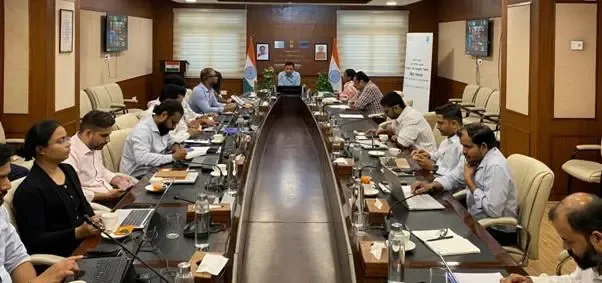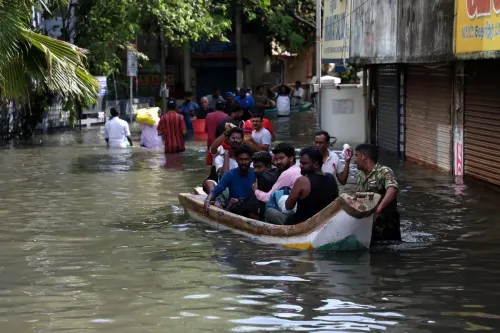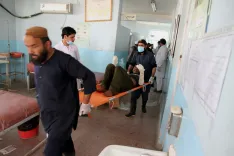How are successful models and local ownership driving water security at the JJM meet?

Synopsis
Key Takeaways
- Community involvement is essential for successful water management.
- Local governance enhances accountability and sustainability.
- Innovative models from Rajgad taluka showcase effective water conservation.
- Data-driven decision-making is vital for ensuring sustainable service delivery.
- Expansion of successful strategies can support the UN SDGs.
New Delhi, Nov 4 (NationPress) Emphasizing the importance of community involvement and decentralized water management within the framework of the National Jal Jeevan Mission (NJJM), district collectors and specialists have reiterated the necessity for committed funding for water-related initiatives under MGNREGA. These initiatives focus on recharge, water harvesting, and source protection, according to an official statement released on Tuesday.
The "District Collectors’ Peyjal Samvad" initiative, a recent nationwide discussion, generated valuable insights aimed at empowering district leadership to enhance local governance, ensure sustainability of water sources, and improve accountability in rural water service delivery under the Jal Jeevan Mission (JJM), the official noted.
Additional Secretary and Mission Director of the National Jal Jeevan Mission (NJJM), Kamal Kishore Soan, emphasized that sustainable service delivery relies on data-driven decision-making, local ownership, and preventive governance, asserting that “District Collectors are vital figures and their roles are crucial under JJM.”
A variety of successful experiments and scalable models of local ownership and community participation are currently under examination for potential application in various regions across the nation.
One notable example being studied by water conservationists is located in Maharashtra’s Rajgad taluka, where Village Development Committees (VDCs) and Gram Panchayats have effectively achieved water security by harvesting and storing rainwater.
Currently, nearly 19.7 million liters of community-managed water storage guarantees year-round availability, thanks to farm ponds, solar water ATMs, and a percolation tank, all maintained by village communities and individuals trained by the Raintree Foundation.
Moreover, Self-Help Groups (SHGs) and Mahila Gram Sabhas are now actively involved in forming local resilience plans, with guidance from Foundation founder Leena Dandekar. This initiative aligns with the Jal Shakti Ministry's directive to "tap rainwater where it falls," and the Rajgad strategy is being expanded to the Shastri River Basin in Ratnagiri, encompassing 400 villages and 200,000 hectares, supporting all 17 UN Sustainable Development Goals (SDGs).
In rural India, where numerous water programs often face maintenance challenges, the residents of Rajgad have utilized stored rainwater to revitalize 6.5 acres of community plantations featuring native species, as well as reducing forest fires by 30 percent.
Despite receiving substantial rainfall, the Rajgad region continues to grapple with persistent water scarcity, a lack of industrial development, and significant migration pressures.
The Jal Shakti Ministry’s "District Collectors’ Peyjal Samvad" series is part of the ongoing initiative by the Department to reinforce local governance and decentralized water management under JJM.
The inaugural edition, held on October 14, centered on empowering districts and panchayats through digital tools, accountability frameworks, and peer learning opportunities.









